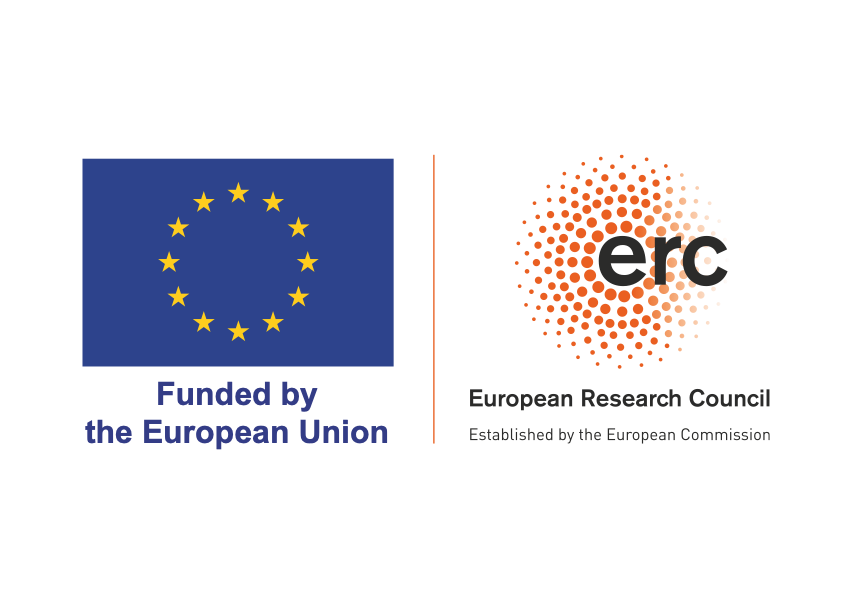A web application to experiment and visualize how evolution is distorted by the geological record, focusing on carbonate platforms.
Niklas Hohmann (Maintainer)
Utrecht University
email: n.h.hohmann [at] uu.nl
Web page: uu.nl/staff/NHohmann
ORCID: 0000-0003-1559-1838
Emilia Jarochowska
Utrecht University
email: e.b.jarochowska [at] uu.nl
Web page: www.uu.nl/staff/EBJarochowska
ORCID: 0000-0001-8937-9405
Peter Burgess
University of Liverpool
Email: pmb42 [at] liverpool.ac.uk
Web page: liverpool.ac.uk/environmental-sciences/staff/peter-burgess
Apache 2.0 License, see LICENSE file for license text.
The app is available online at stratigraphicpaleobiology.shinyapps.io/DarwinCAT
Online access works with a web browser and does not require any coding skills or installations.
Running the app offline requires R version 3.3 or later, RStudio, and the R packages "renv", "shiny" and "png".
-
Open the R project: Go to File -> Open Project, then navigate to the DarwinCAT folder and open the DarwinCAT Rproject file (file ending .Rproj). This will bootstrap the renv package.
-
Run
renv::restore()
This will install all packages dependencies required to run the app.
-
Now you can start the app by running the command
shiny::runApp()
- LICENSE.md : Apache 2.0 license text
- README.md : Readme file
- app.R : Main app
- renv.lock : lock file from R package renv
- CITATION.cff : Citation format file
- .zenodo.json : Metadata for zenodo
- DarwinCAT.Rproj : Rproject file
- .Rprofile : Rprofile file generated by renv
- .gitignore : Untracked files
- data : Folder for data
- age_depth_models_for_shiny_app.Rdata : R workspace containing the age depth models generated by CarboCAT in Matlab
- renv : Folder used by the R package renv
- src : Folder for functions called by the app
- getAgeDepthModel.R : returns age depth models based on user input
- getEvolutionarySimulations.R : makes evolutionary simulation based on user inputs
- global_variables.R : loads data & global variables into workspace
- makeBasinTransectPlot.R : plot basin transect generated by CarboCAT
- makeWheelerDiagram.R : plot Wheeler diagram generated by CarboCAT
- makeTimeDomainPlot.R : plot trait simulations in time
- makeAgeDepthModelPlot.R : plots age depth models
- makeStratDomainPlot.R : plot evolutionary simulations in stratigraphic domain
- transform_ts.R : transfroms time series from time to depth domain
- prepare_download_trait_evo.R : prepares download of trait evol. data
- prepare_download_strat_pal.R : prepares download of strat pal data
- prepare_download_upload_data.R : prepares download in upload data tab
- process_upload_data.R : preprocesses data uploaded by users
- www : Folder with pictures used in the app
To cite the app, please use
- Hohmann, N., Jarochowska, E., & Burgess, P. (2024). DarwinCAT (v1.2.1). Zenodo. https://doi.org/10.5281/zenodo.13375156
If you use or cite the app, please also cite CarboCAT:
- Burgess, P.M., 2013, CarboCAT: A cellular automata model of heterogeneous carbonate strata: Computers & Geosciences, v. 53, p. 129--140, doi: 10.1016/j.cageo.2011.08.026.
This app uses data from
- Hohmann, Niklas, Koelewijn, Joël R.; Burgess, Peter; Jarochowska, Emilia. 2023. "Identification of the Mode of Evolution in Incomplete Carbonate Successions - Supporting Data." Open Science Framework. https://doi.org/10.17605/OSF.IO/ZBPWA, published under the CC-BY 4.0 license, supplement to: Hohmann, Niklas; Koelewijn, Joël R.; Burgess, Peter; Jarochowska, Emilia. 2024. "Identification of the mode of evolution in incomplete carbonate successions." BMC Ecology and Evolution, 24, 113. DOI: 10.1186/s12862-024-02287-2.
This data was generated using CarboCAT, a forward model of carbonate sedimentation developed by Peter Burgess.
Online access to the App is made possible by the IDUB programme of the University of Warsaw (Grant BOB-IDUB-622-18/2022).
Co-funded by the European Union (ERC, MindTheGap, StG project no 101041077). Views and opinions expressed are however those of the author(s) only and do not necessarily reflect those of the European Union or the European Research Council. Neither the European Union nor the granting authority can be held responsible for them.
